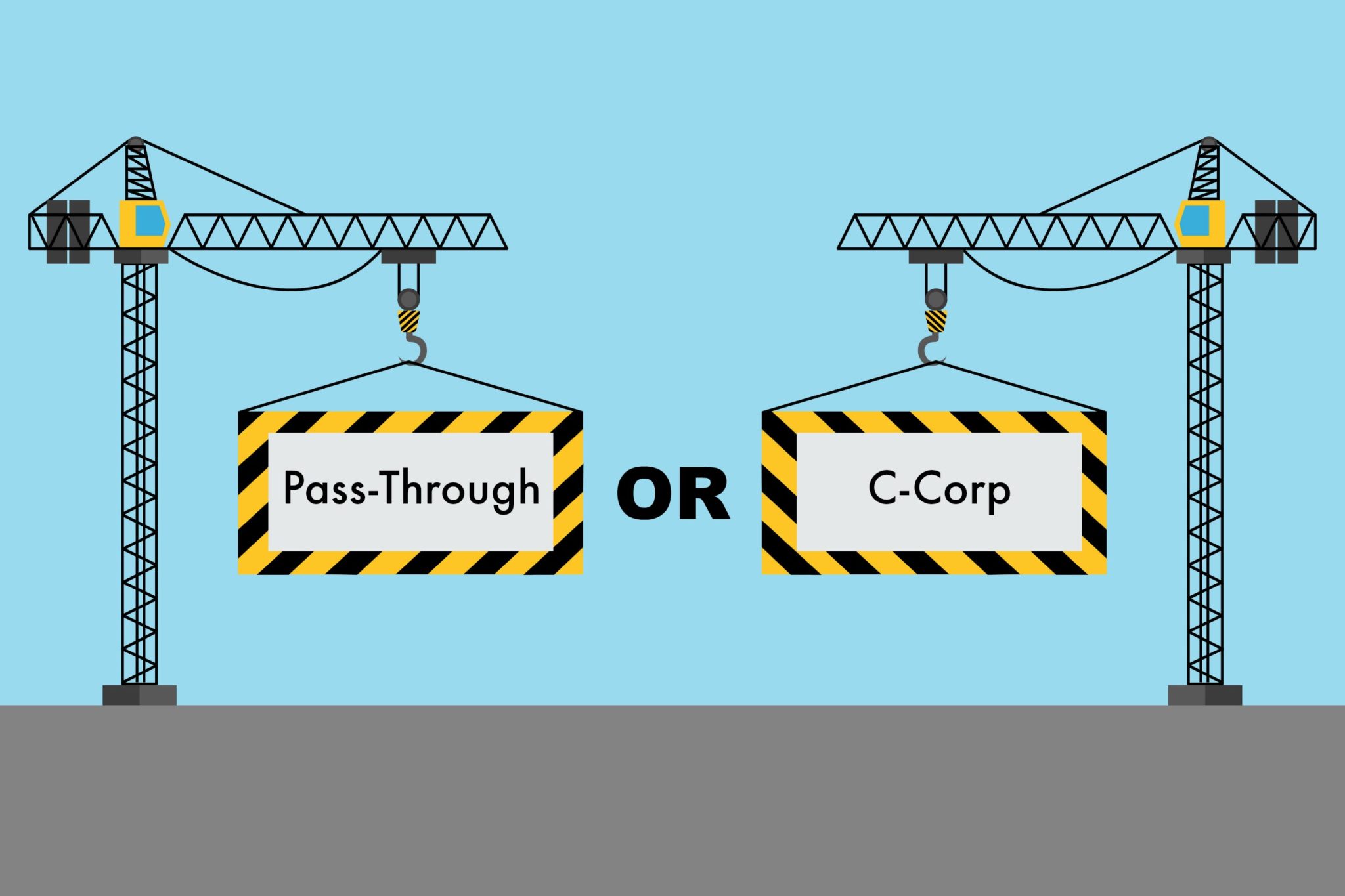Tax reform changes the equation
The Tax Cuts and Jobs Act (TCJA) slashed federal corporate income taxes from a top rate of 35% to a flat rate of 21%. As a result, many construction company owners organized as pass-through entities — such as S corporations, limited liability companies (LLCs) and partnerships — are rethinking their business structures.
An owner’s share of pass-through income continues to be taxed at individual income tax rates as high as 37% (down from 39.6%), so converting to a C corporation may seem like a no-brainer. But while some businesses may benefit from converting, the decision isn’t just a matter of comparing a 37% rate to a 21% rate. There are many factors to consider in estimating your company’s net effective tax rate as a C corporation vs. its net effective rate as a pass-through entity.
Eligibility for the pass-through deduction
The TCJA permits certain pass-through owners (including sole proprietors) to deduct 20% of their qualified business income (QBI) from the entity. (However, the deduction may not exceed 20% of an owner’s taxable income excluding net capital gains.)
QBI generally means your allocable share of the company’s net income (excluding investment income), as well as reasonable compensation from an S corporation or guaranteed payments from a partnership. Assuming you’re in the 37% tax bracket, receive only QBI from the company and qualify for the full deduction, your effective pass-through rate will be 29.6%. This is still higher than the corporate rate, but, given potential double taxation of corporate income (see “Distribution of profits” below), it may be enough to tip the scales in favor of pass-through status.
The inquiry, however, doesn’t end there. The pass-through deduction is subject to two important restrictions that may reduce or eliminate its benefits. (See “Pass-through deduction has its limits.”)
Material participation in the business
If you’re a passive investor in a pass-through entity, you may be subject to an additional 3.8% of taxation under the net investment income tax (NIIT) on your share of the company’s income. The tax applies to individuals with modified adjusted gross incomes (MAGIs) exceeding $200,000, or $250,000 for joint filers. (Typically, MAGI is the same as adjusted gross income.) It’s equal to 3.8% of the lesser of your NII or the excess of your MAGI over the income threshold.
If you materially participate in a pass-through business, you’ll avoid the NIIT. But keep in mind that material participants are generally subject to self-employment taxes on their shares of partnership or LLC income or to payroll taxes on their salaries from S corporations.
C corporation shareholders, on the other hand, are subject to the NIIT on dividends, regardless of their level of participation in the business.
Distribution of profits
If your construction company distributes its profits to the owners, a pass-through structure may be preferable. This is because C corporation distributions are exposed to double taxation: once at the corporate level at the 21% rate and again at the shareholder level at rates up to 23.8% (the 20% qualified dividend rate for high-income earners plus the 3.8% NIIT). Double taxation results in effective federal tax rates as high as 40%.
If your company reinvests its profits into growing the business, however, double taxation may not be an issue (at least until the company is sold). But watch out for the accumulated earnings tax, which applies to retained earnings that the IRS deems to be excessive.
Other factors
Even if a C corporation retains its earnings, doing so merely defers double taxation. If you sell the business, the proceeds will be taxed at the corporate level and again when distributed to shareholders. So, if you’re contemplating a sale, a pass-through structure may be preferable.
Also consider the state or states in which you do business. State individual and corporate taxes significantly affect your overall effective tax rate.
What lies ahead
Weighing the tax implications of pass-though vs. corporate status is complicated — and future tax changes may alter the equation yet again. For one thing, the pass-through deduction and lower individual income tax rates are temporary. The deduction disappears and tax rates return to their previous levels in 2026.
Plus, there’s nothing to prevent Congress from increasing corporate tax rates in the future. Thus, it’s important to monitor legislative developments for tax changes that may affect your entity choice. Work closely with your CPA to get and stay up to speed.
Pass-through deduction has its limits
In calculating the benefits of the pass-through deduction (see main article), it’s important to consider two significant limits for owners whose taxable income exceeds certain thresholds:
- The deduction is limited to the greater of 1) 50% of the company’s W-2 wages, or 2) 25% of W-2 wages plus 2.5% of the unadjusted basis of qualified property (generally, depreciable tangible property used in the business). This limit is phased in beginning when taxable income reaches $157,500 ($315,000 for joint filers) and is fully applicable once income reaches $207,500 ($415,000 for joint filers).
- For certain service businesses, the deduction is phased out over the same income range. It’s unclear whether the phaseout applies to construction businesses, but we won’t know for sure until the IRS issues guidance on the subject.
© 2018


